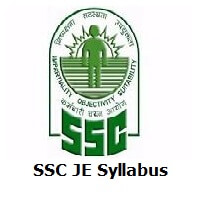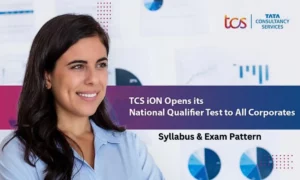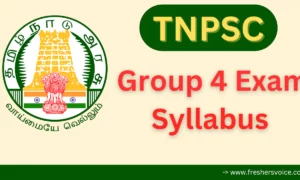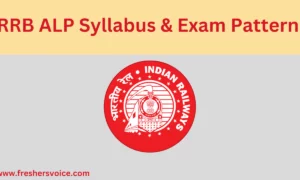SSC JE Syllabus 2020: Staff Selection Commission has announced examination date for the post of Junior Engineers in Civil, Mechanical, Electrical, Quantity Surveying & Contract domains. The exam will be going to conduct on 22 March 2021 to 25 March 2021. The standard of the questions in Engineering subjects will be approximate of the level of Diploma in Engineering (Civil/ Electrical/ Mechanical/Electronics) For this recruitment, candidates should crack the examination conducted by the staff selection commission for that we have to prepare for the examination with the help of syllabus.
SSC JE Syllabus 2020:
Staff Selection Commission is going to conduct the examination for the SSC JE post in Civil, Mechanical, Electrical, Quantity Surveying & Contract domains. For these recruitment candidates should undergo the examinations, it consists of paper-I and paper-II on the Computer-based examination:-
Paper I:
- SSC JE 2020 Paper-I is Computer-based examination(CBE)
- The questions will be consist of objective types
- Paper-I contains 200 marks
- There will be negative marking of 0.25 marks for each wrong answer in Paper-I
- Candidates appearing for the post of JE Civil, Quantity Surveying & Contract should attempt the PART A section
- Candidates appearing for the post of JE Electrical should attempt the PART-B section
- Candidates appearing for the post of JE Mechanical should attempt the PART-C section
SSC JE 2020 Exam Pattern for Paper-I:
| TOPICS | MARKS |
| General Intelligence & Reasoning | 50 |
| General Awareness | 50 |
| General Engineering (Civil & Structural, Electrical, mechanical) |
100 |
| PART-A General Engineering(Civil & Structural) (OR) |
|
| PART-B General Engineering(Electrical) (OR) |
|
| PART-C General Engineering(Mechanical) (OR) |
|
| Total | 200 |
SSC JE 2020 syllabus for Paper-I:
| S.NO | SECTIONS | TOPICS |
| 1 | General Intelligence & Reasoning |
|
| 2 | General Awareness |
|
| 3 | PART-A General Engineering(Civil & Structural) |
|
| PART-B General Engineering(Electrical) |
|
|
| PART-C General Engineering(Mechanical) |
|
SSC JE 2020 syllabus for Paper-II:(written exam)
- The written exam will be conducted for 300 marks in General Engineering in Civil, Mechanical, Structural & Electrical domine
- The total duration of the written exam will be 2 Hour
- Candidates are allowed to bring their own Slide–Rule, Calculator, Logarithm Tables
and Steam Table for Paper-II only
PART-A Civil Engineering & Structural:
| Civil Engineering | |
| SECTIONS | TOPICS |
| Building Materials |
|
| Estimating, Costing and Valuation |
|
| Surveying |
|
| Soil Mechanics |
|
| Hydraulics |
|
| Irrigation Engineering |
|
| Transportation Engineering |
|
| Environmental Engineering |
|
| Structural Engineering | |
| SECTIONS | TOPICS |
| Theory of structures |
|
| Concrete Technology |
|
| RCC Design |
|
| Steel Design |
|
PART-B Electrical Engineering:
| Electrical Engineering | |
| SECTIONS | TOPICS |
| Basic concepts | Concepts of resistance, inductance, capacitance, and various factors affecting them. Concepts of current, voltage, power, energy and their units |
| Circuit law | Kirchhoff’s law, Simple Circuit solution using network theorems |
| Magnetic Circuit | Concepts of flux, reluctance, Different kinds of magnetic materials, Magnetic calculations for conductors of different configuration e.g. straight, circular, solenoidal, etc. Electromagnetic induction, self and mutual induction. |
| AC Fundamentals | Instantaneous, peak, R.M.S. and average values of alternating waves, Representation of sinusoidal waveform, simple series and parallel AC Circuits consisting of R.L. and C, Resonance, Tank Circuit. Poly Phase system – star and delta connection, 3 phase power, DC and the sinusoidal response of R-Land R-C circuit. |
| Measurement and measuring instruments | Measurement of power (1 phase and 3 phase, both active and re-active) and energy, 2 wattmeter method of 3 phase power measurement. Measurement of frequency and phase angle. Ammeter and voltmeter (both moving oil and moving iron type), an extension of range wattmeter, Multimeters, Megger, Energy meter AC Bridges. Use of CRO, Signal Generator, CT, PT and their uses. Earth Fault detection. |
| Electrical Machines |
|
| Synchronous Machines |
|
| Generation, Transmission and Distribution |
|
| Estimation and costing |
|
| Utilization of Electrical Energy |
|
| Basic Electronics |
|
PART- C Mechanical Engineering:
| Mechanical Engineering | |
| Theory of Machines and Machine Design |
|
| Engineering Mechanics and Strength of Materials |
|
| Properties of Pure Substances |
|
| Air standard Cycles for IC engines |
|
| Rankine cycle of steam |
|
| Properties & Classification of Fluid |
|
| Fluid Statics | The pressure at a point. |
| Measurement of Fluid Pressure | Manometers, U-tube, Inclined tube |
| Fluid Kinematics | Streamline, laminar & turbulent flow, external & internal flow, continuity equation. |
| Dynamics of ideal fluids | Bernoulli’s equation, Total head; Velocity head; Pressure head; Application of Bernoulli’s equitation. |
| Measurement of Flow rate Basic Principles | Venturimeter, Pilot tube, Orifice meter |
| Hydraulic Turbines | Classifications, Principles |
| Centrifugal Pumps | Classifications, Principles, Performance. |
| Classification of Steels | Mild steel & alloy steel, Heat treatment of steel, Welding – Arc Welding, Gas Welding, Resistance Welding, Special Welding Techniques |




